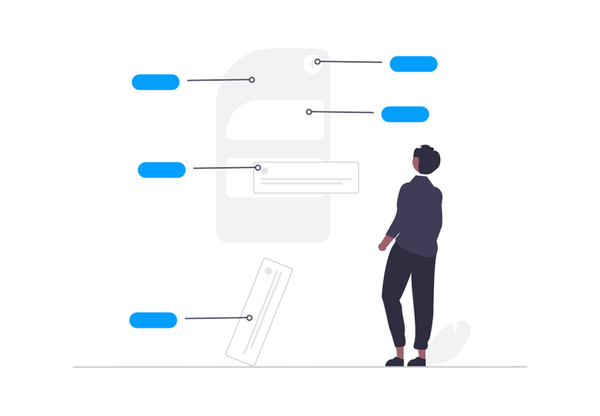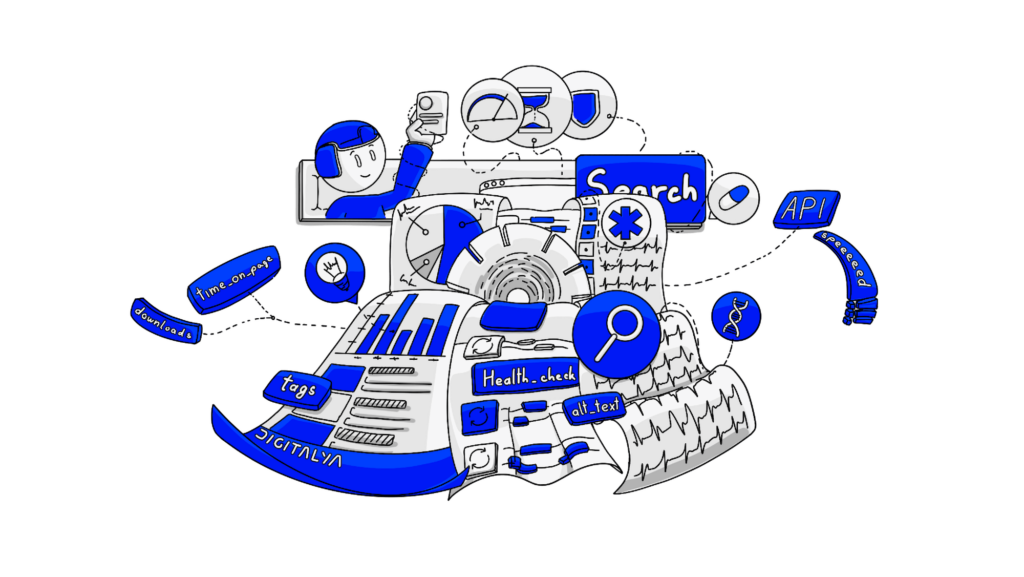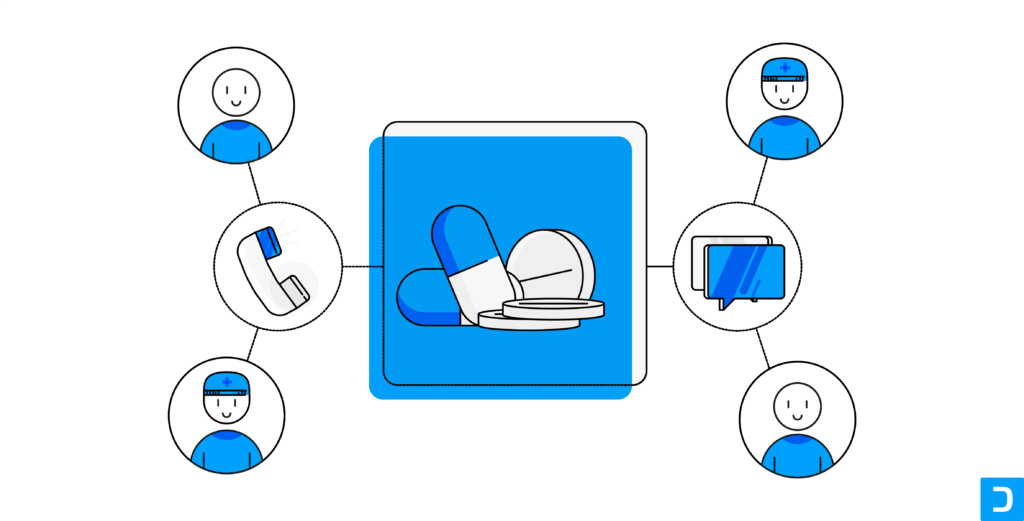Did you know that there were more than 2.56 million apps available on the Google Play Store in 2021? And the number is only going up. And as one would expect, one of the best businesses these days is the mobile app business.
You might be asking yourself: “I want to create an app, where do I start?”. And the most obvious answer is with an idea. But where do ideas come from, and how do we validate them?
1. I want to create an app, where do I start?
There are two stages at the beginning of your journey to app entrepreneurship: coming up with a great app idea and validating your idea.
It’s not enough to wake up one day and say, “I want to create a social media app.” To raise your chances of success, you should try and identify a certain problem that you are familiar with and try to come up with a solution.
Most problems have multiple solutions, so don’t get discouraged if someone has approached your issue. Just try to think outside the box and come up with something new. Let’s see some examples:
For Uber, the problem might sound like this: “I can’t find a taxi when and where I need it.” And the solution was an app that connects the drivers and the users.
For Venmo, the problem statement could be “I don’t have any cash to pay my friend back”, and the solution was offering the possibility of online payments.
However, if you can’t identify your own problem statement, you can still get inspiration from other apps. For example, you can browse through the Google Play store or the Apple app store and see what already exists.
If you check the top charts, especially the top-grossing ones, you can see which apps made the most money. To make the process easier, think about some domains you’re familiar with, like fitness, traveling, marketing, and so forth. This way, you can see the best apps in the categories you’re interested in.
If you find something that catches your eye, ask yourself: “can I solve this problem differently?”. If the answer is yes, it seems like you found a new app idea.
Another strategy is to take some time off. While it sounds counterintuitive, taking the time to observe the world around you can pay off. Sooner or later, you’re bound to stumble upon a problem you wish you had a solution for.
If nothing works, you can always start doing research online. There are plenty of trending mobile app ideas or web app ideas to check that can inspire you. Also, platforms like Quora are full of questions from people that are usually generated from having a problem.
When validating your app idea, Digitalya offers a Design Sprint Workshop where you can design, prototype, and test your app idea. It’s a very useful process since it can help reduce unnecessary risks and maximize your ROI.
However, there are some things that you can do on your own:
- Identify the apps similar to your idea and see how they’re doing. Did they have any funding? If the answer is yes, this usually means that people, especially investors, think the idea is good.
- Check your main keywords. What’s the search volume? The higher their popularity, the more people are interested in what you have to offer.
- Ask your potential users. You can use forums and social media to connect directly with people and ask for feedback on your idea.
Having validated your app ideas will make it easier for you to curate your app for your target audience and to make sure that at the end of the development process, you’ll have a successful app.

2. Can I make an app with no experience?
Unless you want to develop the app independently, having no experience in the app development process shouldn’t be an issue. There are a lot of companies out there with which you can outsource your app idea. However, there are seven easy steps that you should go through when making an app from scratch:
1. Have clearly defined objectives
To start your journey off on the right foot, you need to have clearly defined objectives from the start. Find why you want to build apps and what purpose you want them to serve.
So before making the “I want to create an app” decision, find your purpose and make sure you stick to it through the whole app development process. The two most important questions you need to ask yourself are:
- How can my app solve this specific problem?
- What is the expected result?
And, in case you want to develop an app for your business, analyze which part of your business needs improvement and how your app can provide that.
2. Features and functionalities
Now that you have identified and defined your reasons for building the app, it’s time to decide what features and functionalities you want to include.
The safest and easiest way is to list everything you want your app to have and then prioritize it. If you decide to make an MVP version first (highly recommended), prioritizing the features will help you launch your app quicker, with minimal costs.
One of the best ways to decide what functionalities to include first is carrying out a market research—find out what your competitors already offer and what your target audience wants to see.
Even if your app idea isn’t new and there are similar apps already, you can still develop a successful app if you bring something innovative.
3. Research your competitors
We can’t stress this enough. Before actually starting the app development process, you should have concrete answers to the following questions:
- Are app users looking for apps similar to your idea?
- Who are the top competitors in the field?
- What challenges do these competitors face? What drawbacks do they have?
- What business model do you want to follow?
- Do you know how you’re going to monetize your app?
It’s always a good idea to try to fill in any gaps your competitors have left.
4. Wireframing
After all the details from the above steps have been cleared out, it’s time to design wireframes for your app idea. This is your first skeleton and should give you a clear idea of what the app will look like.
Long story short, wireframing is a visual representation of the layout of your app and how the flow between different screens will look like. This is done based on some use cases or specific things app users will have to perform on your app.
The main goal of this phase is to optimize as much as possible the number and order of the screens for each specific task. For this, you can either do it with a piece of paper and a pen, or you can use any of the wireframing tools available online.
Another important thing to remember is to test your use cases after you have your design. This lets you know what improvements you can make to the user experience.
5. Pick a development path
During this stage, you’ll have to make some important decisions. It’s time to choose between a development platform and several programming languages. If you have all the previous details clearly, this shouldn’t be a difficult task.
Let’s see what options you have for development platforms:
a. Native apps
Without getting into too much detail, you develop your app specifically for a certain operating system, usually having to choose between Android and iOS. If your objective is to have the maximum number of downloads and monetize your app through ads, Android is usually the choice.
With native apps, if you want to launch your product on both Google Play and the Apple App Store, you’d have to make two apps. The advantage is that native apps provide great performance on the platform they’re designed for, but the cost to build will be higher since you’ll need two different teams of application developers. However, another alternative is building a hybrid app.
b. Mobile app development frameworks
Certain frameworks allow you to build a hybrid app that works on Android and iOS, like React Native. This can lower your cost to build an app since you work with the same team of application developers for a single app.
Sure, the performance won’t be the same as with native apps, but things are getting better. Currently, a hybrid app can answer the “I want to make a game app” decision.
c. Drag and drop app builders
This is an option in case your budget is really limited. You can go with an app building platform, like Appy pie or BuildFire, that will allow you to build your own nocode app without having any coding skills whatsoever.
However, while app building platforms seem convenient and easy to use, they have many disadvantages. For instance, depending on the platform, it can be difficult to customize your app to fit the objectives you’ve set in the beginning. And in the long run, you might run into problems when you try to improve your app in the future.
After you’ve decided what platform you want to go with, you should choose the best programming languages for your project. If you have no coding skills, you can always ask your team of developers what they usually use for their projects and why. With a little research, you can easily find that the top programming languages are for your type of app.
6. Start building your app
There are some general guidelines that you can follow to ensure the app development process will go smoothly. For example, make sure that you don’t have any unnecessary elements that only make your app more complex without bringing any benefit.
Additionally, don’t forget to leave the door open for scaling up your app in the future. While your app today only has one single purpose, maybe in the future, you will decide to improve your app.
Having your idea clearly defined and starting objectives throughout the process is the most important thing. If you don’t know what you want your app to do, neither will your team of developers.
7. Test and launch your app
After your app is finished, don’t forget to test your app thoroughly. Try to find as many scenarios as possible so that when you’ve published your app, there will be as few errors as possible.
However, be prepared to receive complaints and bug reports. Stay flexible and try to fix them as soon as possible so that the user experience isn’t affected.
When you submit your app to the app store of your choice, don’t forget about the cost to publish an app. For example, for Google Play Store, you have to pay a one-time fee of $25, while on the Apple App Store, you’ll have to pay around $99 per year.
3. How much does it cost to build an app?
The answer to this question is complicated, as you might expect. The best you can do here is try to get an estimate of the cost to build your app. Software development costs vary greatly depending on the region, the amount and complexity of features, and plenty of other factors.
As a rough estimate, the cost to build your app could be between $20,000 and $500,000, depending on the features and complexity, where $20,000 would be for an MVP and $500,000 for a complex app. There are three main complexity categories:
- Simple apps usually have a price range between $24,000 and $60,000.
- Complex apps, with prices between $36,000 and $85,000.
- Advanced apps start from $59,000 and can reach $137,000.
To get a more accurate estimate for your specific app, you can always use an app cost calculator that takes into account details about your project and how much they cost.
4. Conclusion
It can be daunting to create an app from scratch. However, if you follow our 7-step guide and do some research on your own, it will get easier, step by step. The most important thing to remember is to have clearly defined goals right from the beginning—and the rest will come organically.










